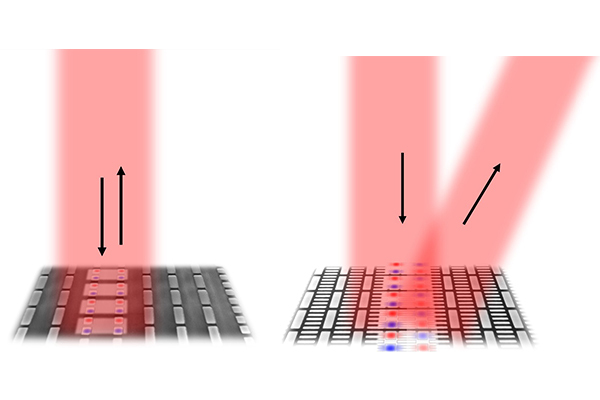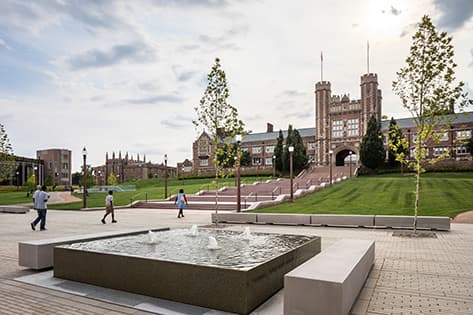Overlap, not distance, keeps chatty nanoantennas from crosstalk
Mark Lawrence’s lab discovers better way to manipulate light

Engineers in the McKelvey School of Engineering at Washington University in St. Louis are manipulating the properties of light to extract different kinds of information to better process images in various technologies from lidar to smartphone lenses.
Mark Lawrence, assistant professor of electrical & systems engineering, and his team, including Samuel Ameyaw, a graduate student in his lab, create metasurfaces made of ultra-thin materials populated with tiny nanoantennas that can both amplify and control light in very precise ways. The antennas allow them to manipulate light with diffraction, which causes light to bend and warp at a flat surface, rather than refracting at a curved surface. One of the benefits of the antennas is that they are highly resonant, which allows them to trap light for a long time. However, that same characteristic causes neighboring antennas to interact with each other, which spoils the wavefront shaping by preventing steep phase gradients from being realized.
In new research published in Advanced Materials July 1, 2025, Lawrence, Ameyaw and the team found a solution to the crosstalk, or coupling, though in an unconventional way.
“What we would normally try first is to move the antennas farther apart to stop them from talking to each other,” Lawrence said. “But if we did that, to double or quadruple the resonant lifetime and the corresponding desirable light enhancing properties, we would have to double or quadruple the antenna spacing. Reaching really high performance, therefore, seems to require very low wave shaping resolution.
To solve the issue, the team allowed the antennas to overlap in two different ways to cancel out the unwanted characteristics.
“We found that if two coupling channels oscillate 180 degrees out of phase, they’re going to perfectly cancel,” Lawrence said. “We have a way for light to transfer from one antenna to its neighbor with a positive or negative sign, depending in the path taken, so if we can balance those two pathways to have exactly the same strength, which is what we do in this research using structural variations, then we can find that sweet spot where the antennas can no longer talk to each other.”
The team determined that the predominant amount of light in these waveguides has its polarization, or the electric field, pointing left and right, but it also has some electric field pointing longitudinally, Lawrence said, which is unique to nanophotonics.
“We found that all we needed to do to get this interference effect to kick in was amplify this longitudinal electric field until it got as strong as the side-to-side or transverse field,” Lawrence said.
Going forward, the team plans to explore the consequences of its method to reduce coupling for even higher experimental resonant lifetimes as well as other resonant meta-atom designs.
“If we fine-tune this balance of different field components to be exact, then we can in principle have identically zero coupling,” Lawrence said. “For example, we could exploit this to steer light using electrical biases that consume just a few picowatts of electrical power to tune these highly resonant antenna arrays with arbitrarily large resolutions. We’re trying to explore the limits, how quickly and how finely we can control a laser beam with these devices for the least possible electrical power you could use.”
Ameyaw S, Lin L, Zhao B, Carr Delgado H, Lawrence M. Eliminating nearfield coupling in dense high quality factor phase gradient metasurfaces. Advanced Materials. July 1, 2025. https://doi.org/10.1002/adma.202417519
Funding for this research was provided by Washington University in St. Louis, WashU’s Institute of Materials Science and Engineering and the Optica Foundation.




